Ozone levels in Belgium during the weekend heat wave
Last Saturday, a new Belgian daily heat record for the 18th of June was recorded since the beginning of the temperature measurement history. A new record of 31.8 °C was measured at 15:00 at the meteorological station in Uccle which is 0.3°C higher than the last highest value of 31.5°C measured in 2002. This historical heat record is not only a reason to seek refreshment on our Belgian coast but also a perfect moment to think about air quality and climate change. Intensive sun activity can cause an enormous generation of ozone gas at the lowest layer of the atmosphere.
Good and bad ozone Ozone is a gas of three oxygen atoms (O3) present in the atmosphere. Ozone occurs both in the Earth’s upper atmosphere and at ground level as a result of photochemical reactions (Figure 1).
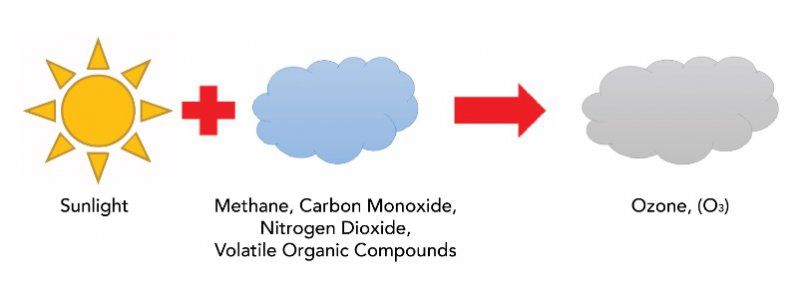
Image 1: Ozone formation in the atmosphere.
The Ozone found in the upper layers of the atmosphere (stratospheric ozone) reflects sunlight and acts as a protective layer from excessive sun irradiation. On the other hand, Ozone at ground level is a harmful air pollutant, because of its adverse effects on human health and the negative impact on the environment. In the following part of the article, Airscan compared the concentration patterns and the values recorded in cities (Brussels & Antwerpen) in the period from 16/06/2022 and 20/06/2022. The values were also compared with the current threshold values. In 2021 the world health organisation set the limit of 100 µg/m3 as an 8-hour average limit.
Ozone concentration in Brussels
The ozone concentration was gradually increasing in Brussels following the average daily temperature and the solar activity in the city. For instance, on the 16th of June, the maximum detected concentration was 115 µg/m3. The next day, the maximum daily concentration increased and was slightly above 120 µg/m3. Despite the fact, that the gas concentration was above 100 µg/m3 during the certain time interval on the 16th and 17th of June the 8-hour average was still under the limit. However, on the 18th of June (the day with the highest temperature), Ozone concentration started rapidly growing in the morning hours and remained above the 100 µg/m3 limit during the entire day. Therefore, the 8-hour average gas concentration was above the limit already in the first half of the day. Oppositely, the next day, ozone concentration decreased due to the end of the heat wave and cloudy weather (Figure 2)
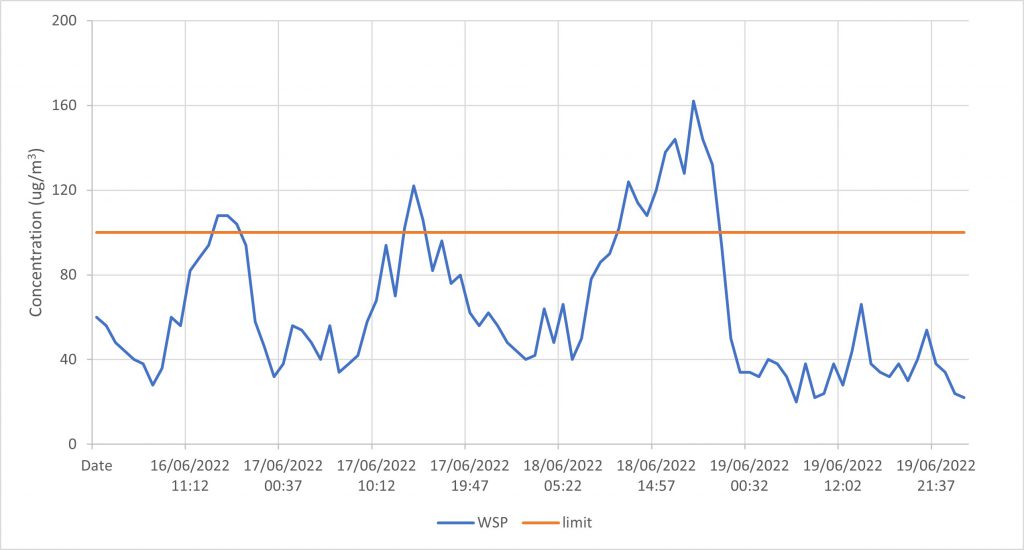
Image 2: Ozone concentration trend in Woluwe Saint-Pierre, Brussels
Ozone concentration in Antwerp
The ozone concentration profile measured in Antwerpen was similar to the trend measured in Brussels. However, the magnitude and the duration of the pollution intervals were higher. For instance, the average 8-hour gas concentration was above the limit of 100 µg/m3 on the 16th, 17th and 18th of June. The observed difference can be explained by the higher amounts of ozone precursors (nitrogen oxides, sulfur oxides, volatile organic compounds, etc) present in Antwerpen due to harbour activities and the petrochemical industry taking place in the harbour area. Identically to the situation in Brussels, the maximum ozone generation was detected on the 18th of June followed up by a significant drop on the 19th of June.
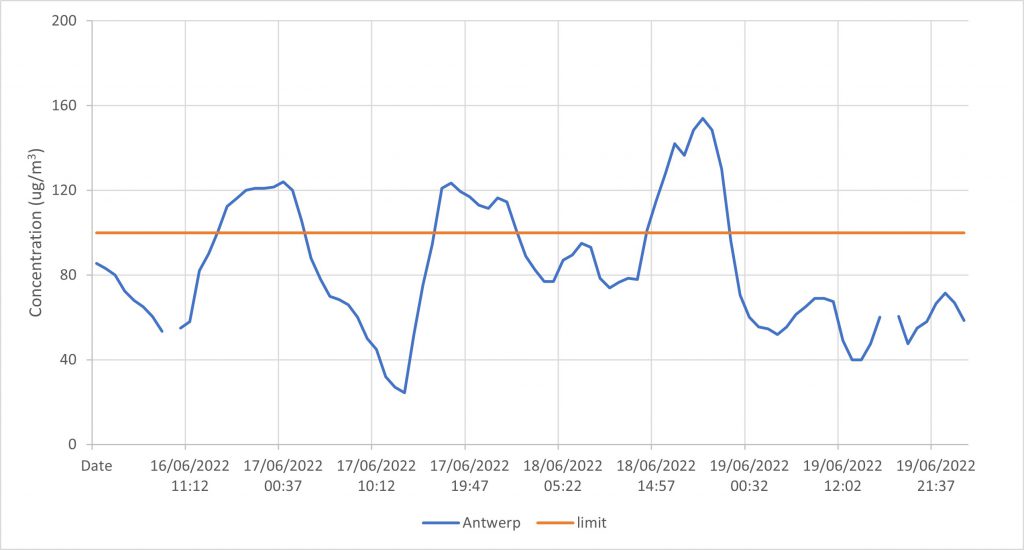
Image 3: Ozone concentration profile measured in Antwerpen
Unfortunately, due to climate change and the high amount of ozone precursors emissions (NOx, SOx and VOCs) into the atmosphere, the number of days when people in the world are exposed to Ozone pollution is increasing. Thus, it is important to reduce the anthropogenic impact by reducing the volumes of air pollution generated by different sources as well as communicating the importance of the air quality and potential health effects. Here are a few tips and recommendations to minimise risks of health problems caused by high temperatures and Ozone concentration:
- Stay hydrated, drink more water than usual.
- Avoid alcoholic, caffeinated, and sugared drinks.
- Limit physical activities outdoors during the maximum solar activity period.
- Do not open windows during the day, ventilate premises after 21:00.
- Minimise usage of private transportation. Emissions from cars can increase Ozone generation volumes
Airscan helps public and private organisations to monitor and control both indoors and outdoors ozone levels to ensure the best living and working environments.
Learned something? Feel free to share.

Air Quality Across Different Brussels Metro Stations
With its intricate network of metro stations, Brussels serves as a crucial artery for daily commuters and tourists alike.
The quality of air within these subterranean hubs remains a pressing concern. In this blog post, we dive deeper into the air quality across various metro stations in Brussels, focusing on the concentrations of PM2.5 and PM10—two of the most harmful pollutants to human health…
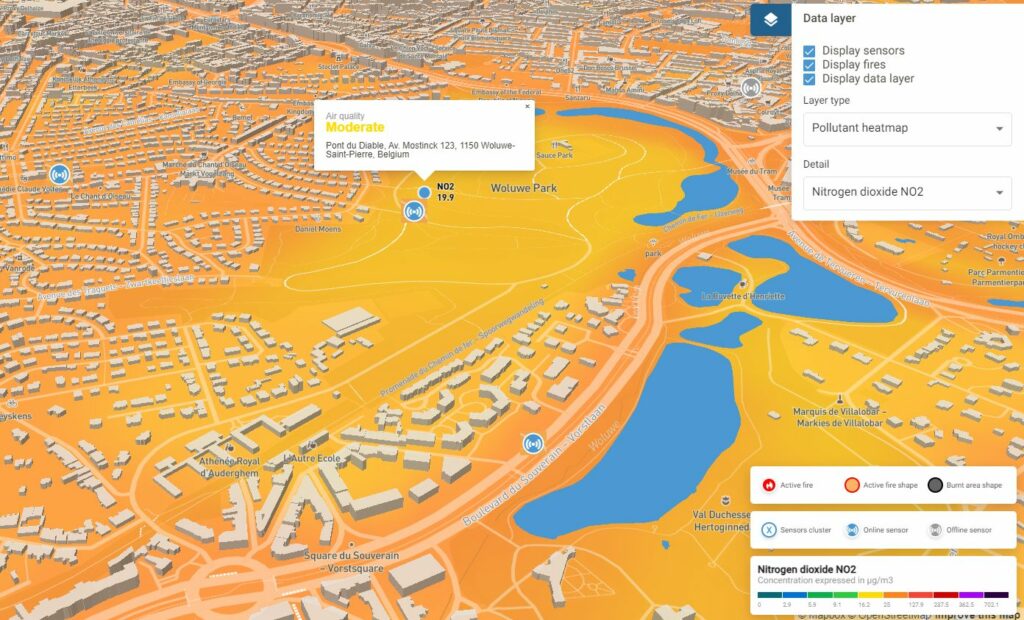
Airscan Launches Air Quality Campaign in Brussels
From the 1st to the 14th of February, Airscan launched an air quality campaign in Brussels. For two weeks, air quality was measured at 8 different locations in the same number of municipalities of the capital. With this campaign, Airscan wants to shed light on the importance of clean air, especially in a busy city such as Brussels.
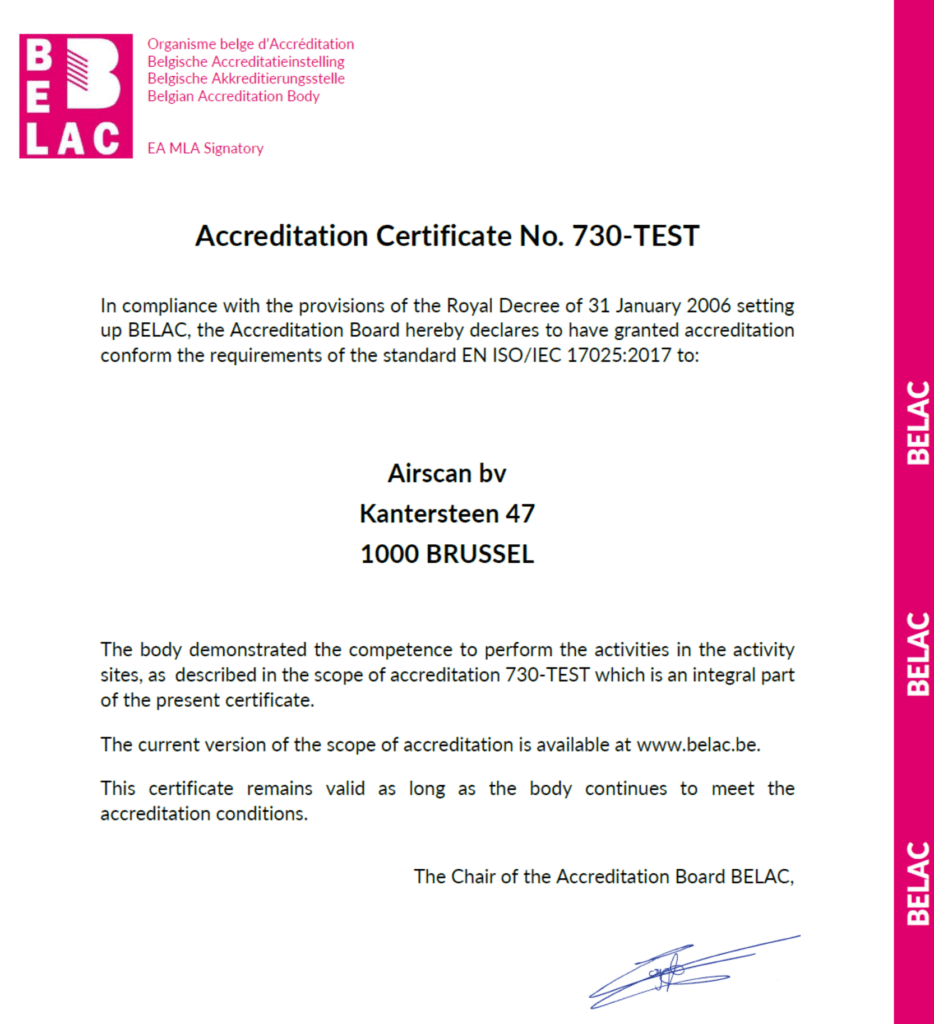
Airscan obtient l’accréditation ISO 17025
Airscan célèbre une année 2023 couronnée de succès avec une expansion internationale et l’obtention de l’accréditation BELAC pour ISO/IEC 17025:2017, reconnaissant leur engagement à fournir des services de haute qualité. L’accréditation renforce la crédibilité et positionne Airscan comme un partenaire de confiance pour les clients de l’immobilier qui poursuivent des certifications de bâtiments écologiques.



